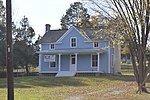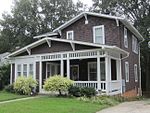Lincoln Hospital (Durham, North Carolina)

Lincoln Hospital was a medical facility located in Durham, North Carolina founded to serve the African Americans of Durham County and surrounding areas. With original hospital construction financed by the Duke family, Lincoln served as the primary African American hospital in Durham from its opening in 1901 until 1976, when it closed and transferred its inpatient services to Durham County General Hospital. Despite its cultural setting within the Jim Crow South, Lincoln Hospital developed and thrived due to a complex web of inter- and intraracial cooperation. Lincoln's medical staff sought to reduce morbidity and mortality of Durham blacks by targeting maternal and child health, infectious disease, and health behavior through health education programs, specialized clinics, and free medical care. Lincoln expanded educational opportunities for blacks through their nursing, residency, and surgery programs during a time where few opportunities existed for blacks in healthcare.
Excerpt from the Wikipedia article Lincoln Hospital (Durham, North Carolina) (License: CC BY-SA 3.0, Authors, Images).Lincoln Hospital (Durham, North Carolina)
Shepherd Street, Durham
Geographical coordinates (GPS) Address Nearby Places Show on map
Geographical coordinates (GPS)
| Latitude | Longitude |
|---|---|
| N 35.9906 ° | E -78.9136 ° |
Address
Shepherd Street 1014
27707 Durham
North Carolina, United States
Open on Google Maps











